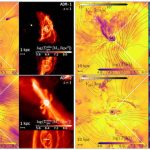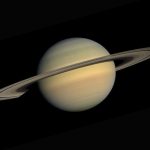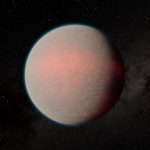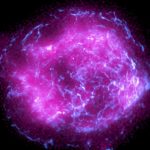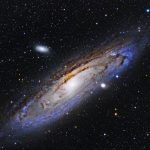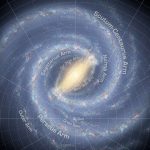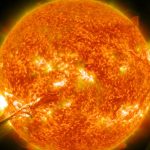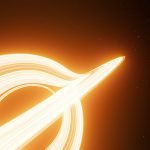Advanced life should have already peaked billions of years ago, says paper
Did humanity miss the party? Are SETI, the Drake Equation, and the Fermi Paradox all just artifacts of our ignorance about Advanced Life in...
Scientists find Saturn’s rings are younger than believed
Saturn's rings are a beautiful mystery that has captivated scientists and stargazers for centuries.
A new breakthrough in our understanding of these celestial bodies has...
How fast is the Universe really expanding? Multiple views of an exploding star raise...
How did we get here? Where are we going? And how long will it take?
These questions are as old as humanity itself, and, if...
Scientists get first up-close look at this mysterious exoplanet’s atmosphere
Exoplanet GJ 1214b is too hot to be habitable, but likely contains water vapor.
For more than a decade, astronomers have been trying to get...
Neutron star’s X-rays reveal photon metamorphosis
A “beautiful effect” predicted by quantum electrodynamics (QED) can explain the puzzling first observations of polarized X-rays emitted by a magnetar – a neutron...
The Milky Way’s eRosita bubbles: New study reveals surprising details
Astronomers have discovered new information about the giant bubbles of high-energy gas that surround the Milky Way's center.
The "eRosita bubbles," named after the eRosita...
Surprising complexity of galactic bubbles beyond the Milky Way
A team of astronomers led by scientists at The Ohio State University has revealed new information about the galactic bubbles that extend above and...
How 1000 undergraduates helped solve a mystery about the sun’s corona
Researchers have long been puzzled by how the outermost atmosphere of the sun, called the "corona," becomes so hot.
To answer this question, a team...
Scientists have solved mystery of the runaway supermassive black hole
Astronomers recently discovered a long and narrow structure of stars formed eight thousand million years ago using the Hubble Space Telescope.
The trail is about...
What is the shape of the Milky Way galaxy?
Chinese researchers have published a paper in The Astrophysical Journal that suggests the Milky Way only has two arms, rather than the four that...

